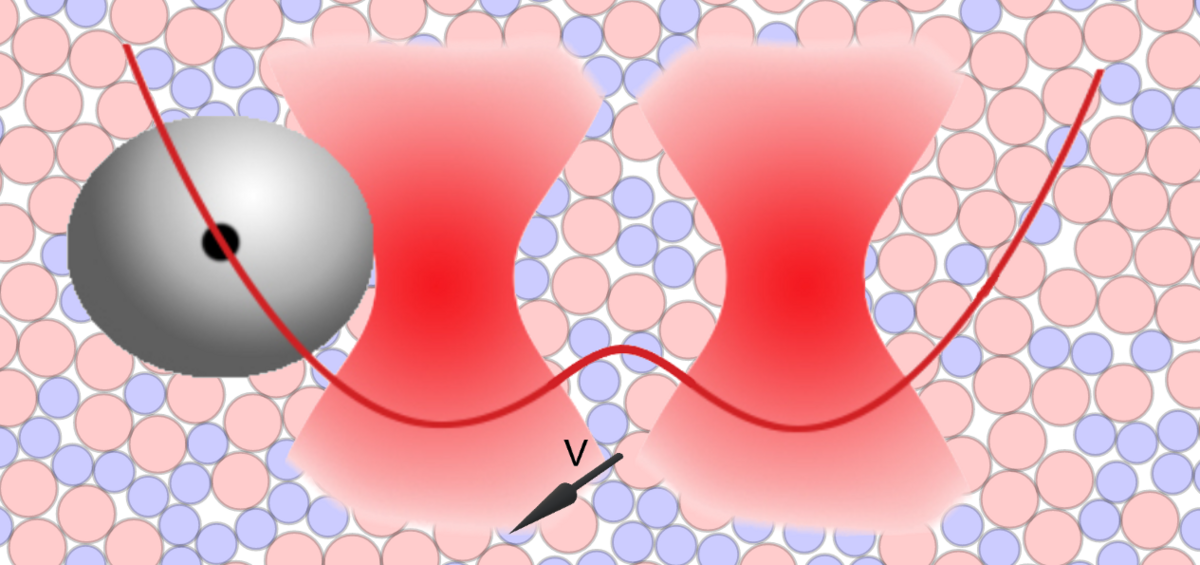Microrheology and activation in colloidal dispersions

Rheology is interested in the viscoelastic properties of materials, for example in how they deform if a force is applied. Microrheology takes that concept down to the level of a single colloidal probe particle placed in a small sample volume and tracked by video microscopy. The probe can be manipulated with e.g. optical tweezers, which allows to direct its motion and measure its response. This technique is called active microrheology. Some advantages of microrheological experiments are that the small sample volumes allow characterization of scarce or expensive materials and that it allows local measurements in heterogeneous samples, what is not possible in conventional rheology. It is physics far from thermal equilibrium, which can lead to surprising effects. This challenge is addressed in our work by analyzing theoretical models for active microrheology in a colloidal glass.
The activated crossing of an energy barrier is a ubiquitous dynamical process observed in quite different systems. Activation processes far from thermal equilibrium and in high dimensional energy landscapes, however, remain poorly understood. The motion of a particle in a double well potential that is dissolved in a strongly sheared viscoelastic fluid has been suggested by Ilg and Barrat as a model system where activation far from equilibrium can be investigated. In the present project, we will develop a microscopic theory based on approaches from density functional and nonlinear response theory combined with projection operator techniques describing the time-dependence of a fluctuating reaction coordinate in a nonlinear potential which is driven by the interactions with surrounding particles that move in strong flow. The probe particle is thus coupled to a dense fluid that is driven far from equilibrium by an external field. Goal of the project is to characterize the fluctuations of a nonlinear dynamical system depending on its stochastic interactions with a particulate fluid bath that is in a nonequilibrium (stationary) state. Concepts from linear response theory close to equilibrium, such as fluctuation dissipation relations, will be studied far from equilibrium. The conditions for observing activated dynamics in a double-well potential will be investigated and the concept of an effective temperature scrutinized. Based on the simple model character of the considered set-up, the obtained results can be expected to be quite general. We are seeking strong collaboration with the rearchers of SFB1432 especially in project C06.

